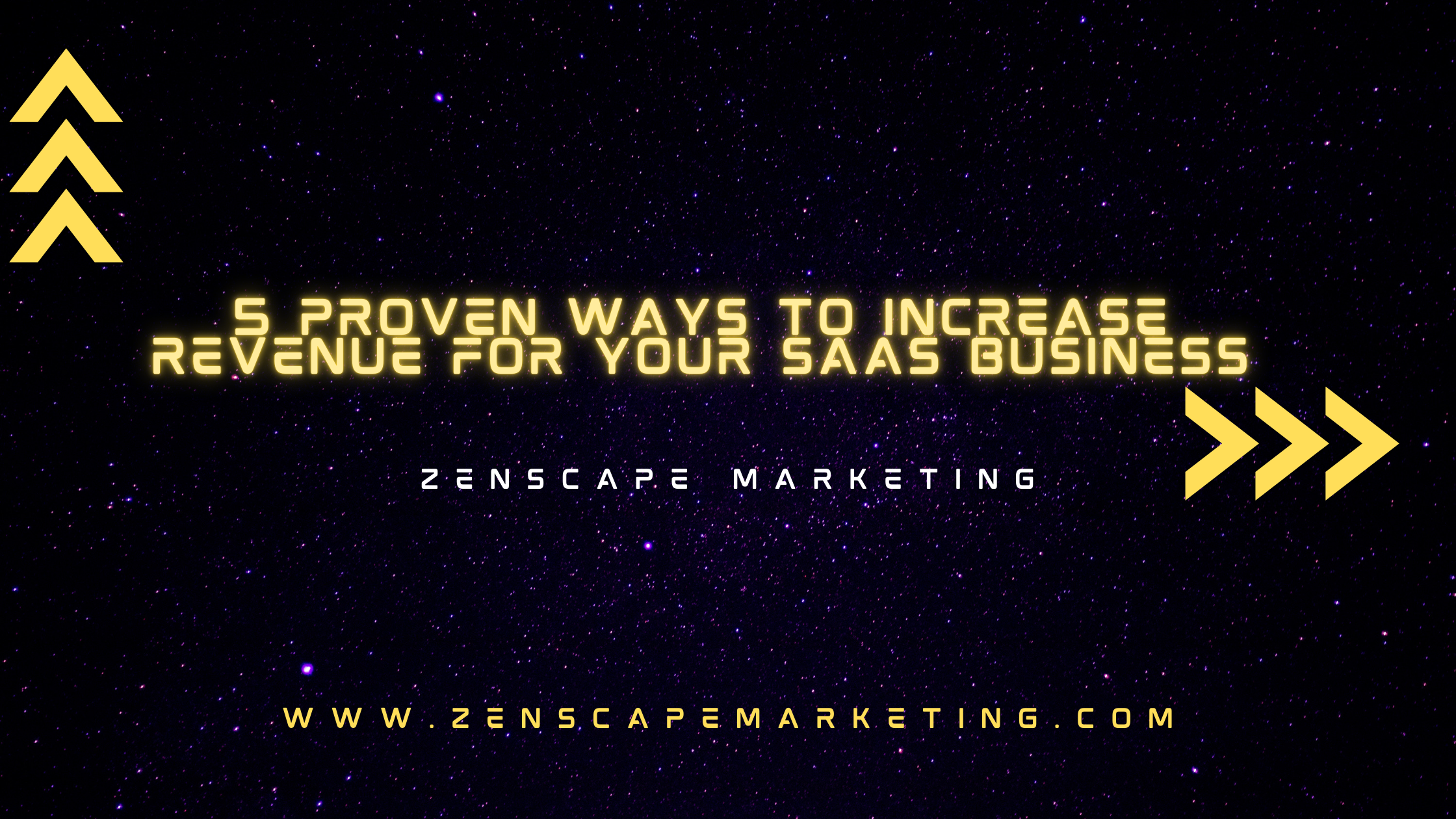Introduction
Growing revenue is the lifeblood of any SaaS business. But relying solely on paid acquisition to drive that growth can be costly and unsustainable. The most successful SaaS companies understand the importance of diversifying their growth strategies and finding cost-effective ways to acquire, retain, and expand their customer base. In this article, we’ll explore five proven ways to increase your SaaS revenue without having to crank up your ad spend.
Strategy 1: Implement a Customer Referral Program
One of the most powerful and cost-effective growth strategies for SaaS is leveraging the enthusiasm of your existing customers. Happy customers can be your best salespeople, eagerly recommending your product to their networks. But leaving referrals to chance is a missed opportunity. That’s where a structured customer referral program comes in.
The key is to make referring easy and rewarding for your customers. Your program should be simple to understand, with a clear value proposition for both the referrer and the referee. Discounts and free services are cool, but what if you made it even simpler? It can be as easy as sending your referrer a cash reward of 50-100 dollars for every client they send your way; in this case, they’re not obligated to use your services again until they’re ready, but they can still enjoy a reward for helping you grow.
Strategy 2: Leverage Content Marketing
Content marketing is the process of creating and distributing valuable, relevant content to attract, acquire, and engage your target audience. For SaaS businesses, content marketing can be a powerful way to build brand awareness, establish thought leadership, and drive organic traffic and leads.
The key is to create content that resonates with your target buyers and addresses their pain points, challenges, and aspirations. This should, at the minimum, include blog posts on your website, short reel-style videos on social media, value posts on social media, and webinars. The goal is to educate and provide real value, not to overtly pitch your product.
Once you’ve created your content, promotion is critical. Share across all your social channels (Facebook and YouTube are the bare minimum), to your email list, and through strategic content syndication partnerships. And don’t forget to optimize for search engines to drive long-term organic traffic.
Strategy 3: Optimize Your Pricing Strategy
Finding the optimal pricing strategy is no easy feat. It requires a deep understanding of your customers’ perceived value, your market positioning, and your unit economics.
Common SaaS pricing models include flat-rate pricing, usage-based pricing, tiered pricing, and freemium. Each has its own pros and cons and is better suited for different types of products and markets. For example, usage-based pricing can be great for products where the value scales with usage (like an email marketing platform), while tiered pricing can allow you to capture a range of customer segments from small businesses to enterprises.
The key is to continuously test and iterate on your pricing, measuring the impact on key metrics like conversion rate, average revenue per user, and churn. Don’t be afraid to make bold changes if the data supports it. If implemented at correctly and at the right time, a simple price raise is one of the easiest possible ways to increase your revenue. Of course, make sure it’s informed by your market research and a cost-benefit analysis related to retention of your current customers. If you’re worried about potentially losing existing clients, you can always give a value add along with the price raise.
Strategy 4: Focus on Customer Retention & Expansion
It’s common knowledge that it costs more to acquire a new customer than to retain an existing one, yet many SaaS companies pour a disproportionate amount of resources into acquisition while neglecting customer retention and expansion. That’s a costly mistake.
Churn is the silent killer of SaaS businesses; even a seemingly small monthly churn rate of 2-3% can have a huge impact on your growth over time. That’s why a focus on customer success should be a top priority.
This starts with ensuring a smooth onboarding experience that gets users to their “aha moment” quickly, and continuously engaging users with helpful content, product updates, and usage tips can help drive adoption and stickiness. And of course, providing exceptional customer support is non-negotiable.
But retention is just the first step. The real growth opportunity lies in expansion – getting your existing customers to upgrade to higher tier plans, purchase add-ons, or increase their usage. These are what we call “up-sells” and “cross-sells”, and to do them effectively, you need to have a deep understanding of your customers’ evolving needs and continuously deliver increasing value through your other packages or plan options.
Strategy 5: Build Strategic Partnerships
The final strategy to boost your SaaS revenue without relying on paid ads is to leverage the power of partnerships. By partnering with other companies that serve a similar target audience, you can tap into new growth channels and quickly build credibility and trust.
There are many different types of partnership opportunities for SaaS businesses to explore. Integration partnerships involve building native integrations with complementary products, making your combined offering more valuable for shared customers. Co-marketing partnerships involve collaborating on content, webinars, or events to cross-promote to each other’s audiences, and channel partnerships involve working with agencies, consultants, or resellers who can bring your product to their clients.
The key to successful partnerships is to find partners that share your values, serve a similar audience, and offer a complementary (not competitive) product or service. Start by identifying your ideal partner profile, then do your research to build a list of target partners. Reach out with a personalized pitch that clearly articulates the value of the partnership for both parties.
Conclusion
Paid acquisition will always have a place in a SaaS company’s growth strategy, but it should never be the only tool in your toolkit. By implementing customer referral programs, leveraging content marketing, optimizing your pricing, focusing on retention and expansion (up-sells and cross-sells), and building strategic partnerships, you can supercharge your growth in a sustainable and cost-effective way.
The key is to experiment and find the right mix of strategies that work for your unique business and audience. Don’t be afraid to try new things, always measure the results, and double down on what’s working. With the right growth mix and a relentless focus on delivering customer value, the sky’s the limit for your SaaS revenue growth.
Ready to take your SaaS or service-based business to the next level? Our proven growth strategies help clients add 72% in new monthly revenue by compounding a simple 20% increase in each of the areas we discussed in this article.
If you’re serious about sca ling your business, visit our website today and learn more at zenscapemarketing.com.See you there! ⚡


